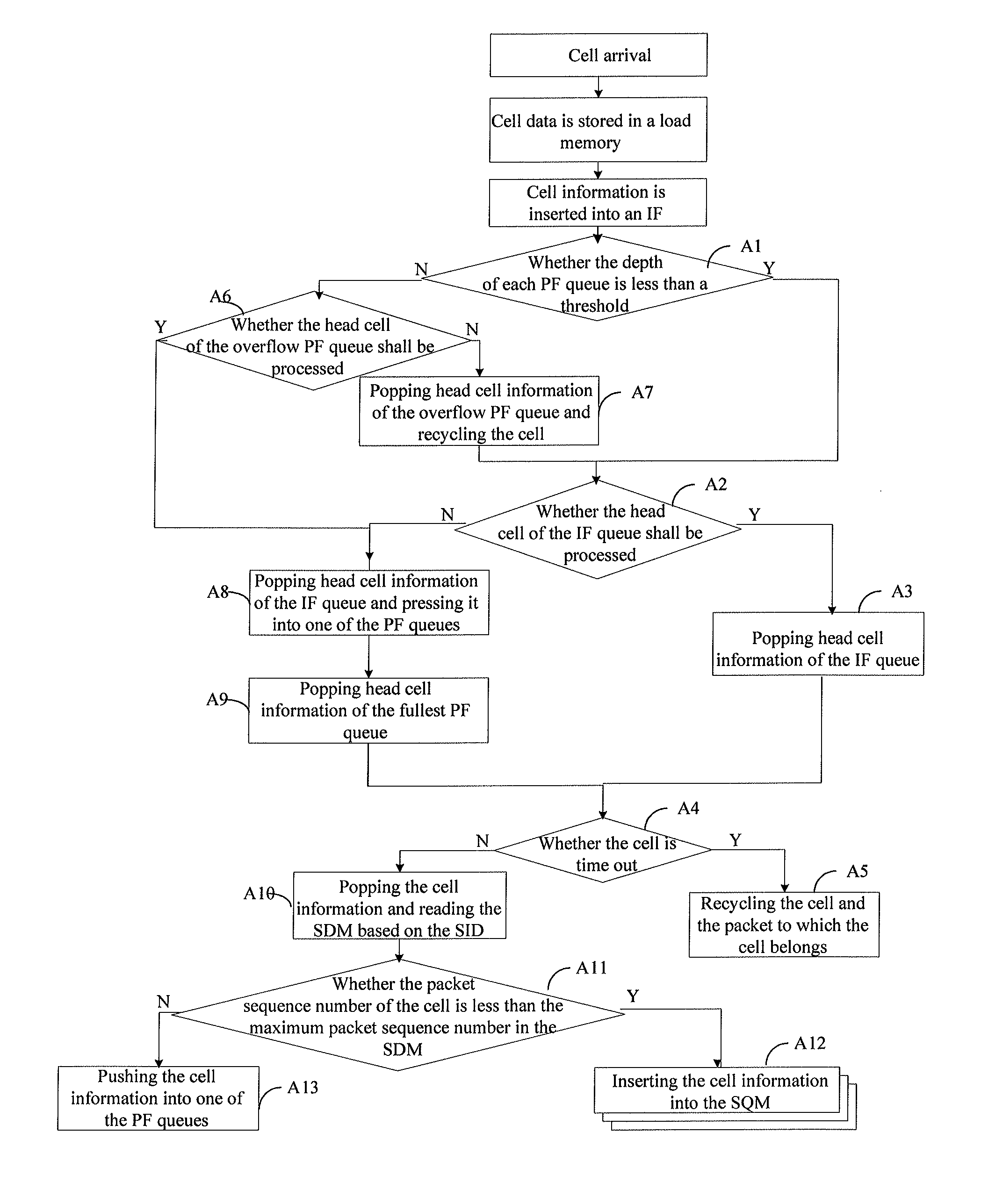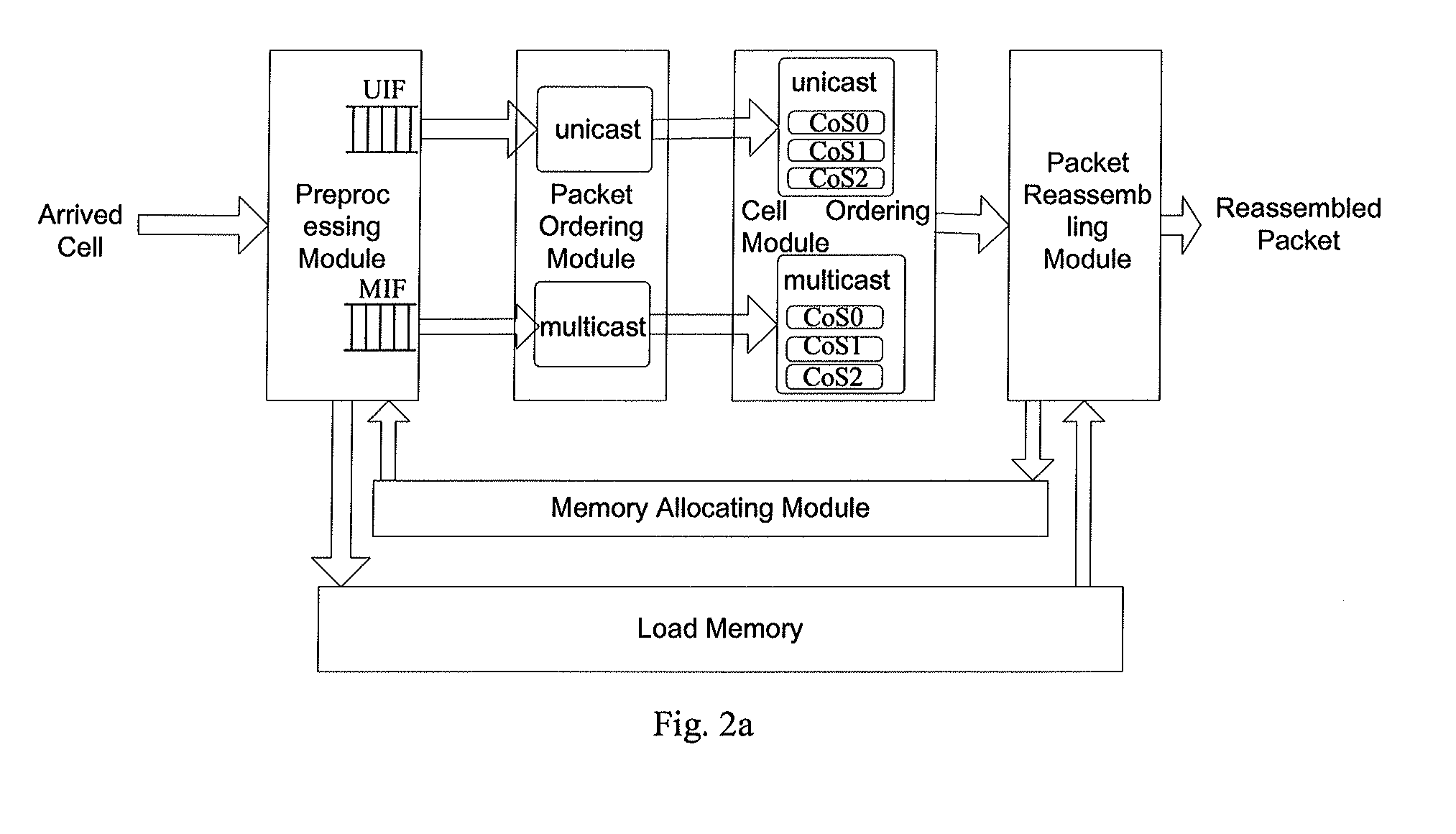Method, apparatus and system for packet reassembly and reordering
a packet reassembly and reordering technology, applied in the field of communication technology, can solve the problems of not being suitable for high-performance equipment, difficult to achieve very accurate time scale synchronization, and waste of memory and control resources, so as to achieve low cost, less memory and control resources are occupied, and the effect of high resource utilization ratio
- Summary
- Abstract
- Description
- Claims
- Application Information
AI Technical Summary
Benefits of technology
Problems solved by technology
Method used
Image
Examples
embodiment 1
[0032]This embodiment will be described in the perspective of a network device serving as the destination port.
[0033]A method for packet reassembly and reordering, including: receiving a cell sent by a source port, wherein the cell carries a Source Identification (SID), a packet sequence number and a cell sequence number; preprocessing the received cell according to the SID to determine whether the cell shall be inserted into a packet reassembly database; ordering cells in the packet reassembly database according to the packet sequence number to obtain a correctly ordered packet; if the correctly ordered packet is a complete packet, ordering the cells of the correctly ordered packet according to the cell sequence number to obtain correctly ordered cells; and performing a packet reassembly for the correctly ordered cells.
[0034]Referring to FIG. 1, the concrete flow may be as follows:
[0035]101: Receiving a cell sent by a source port, wherein the cell carries an SID, a packet sequence ...
embodiment 2
[0086]Hereinafter, the method described according to Embodiment 1 will be further described in details through the examples.
[0087]As illustrated in FIG. 2a, which is an architecture view of a process of packet reassembly and reordering, it mainly includes the following steps of:
[0088]Step 1: after a cell arrives at the destination port, a memory allocating module allocates a load memory to the received cell; a preprocessing module stores cell data of the cell into the load memory according to an SID, classifies cell information of the cell according to the SID of the cell, and stores the cell information into different IFs, respectively, according to the classes. For example, the cell information may be classified according to the broadcast class, and put into the Unicast Input FIFO (UIF) queue in case of being unitcast data, and put into the Multicast Input FIFO (MIF) queue in case of being multicast data, as illustrated in FIG. 2a. In which, the cell information may include some c...
embodiment 3
[0142]The method described in Embodiment 2 is also suitable for the multicast data. The multicast mainly differs from the unicast as follows:
[0143]The unicast packet requires the SDM and uses {priority, source port number} as the index. The multicast packet requires the MGID descriptor memory, and uses the hash value of {priority, MGID, source port number} as the index, wherein the MGID means a group of destination ports belonging to the same replication domain. Correspondingly, in the multicast, the SQM of the unicast is replaced by the MGID queue memory. That is, the packet reassembly database for multicast specifically may be as follows:
[0144]the packet reassembly database for multicast may include an MGID descriptor memory and an MGID queue memory, wherein the MGID descriptor memory is configured to store MGID descriptors and take the hash value of {priority, MGID, source port number} as the index, while the MGID queue memory is configured to store MGID queues corresponding to t...
PUM
 Login to View More
Login to View More Abstract
Description
Claims
Application Information
 Login to View More
Login to View More - R&D
- Intellectual Property
- Life Sciences
- Materials
- Tech Scout
- Unparalleled Data Quality
- Higher Quality Content
- 60% Fewer Hallucinations
Browse by: Latest US Patents, China's latest patents, Technical Efficacy Thesaurus, Application Domain, Technology Topic, Popular Technical Reports.
© 2025 PatSnap. All rights reserved.Legal|Privacy policy|Modern Slavery Act Transparency Statement|Sitemap|About US| Contact US: help@patsnap.com



